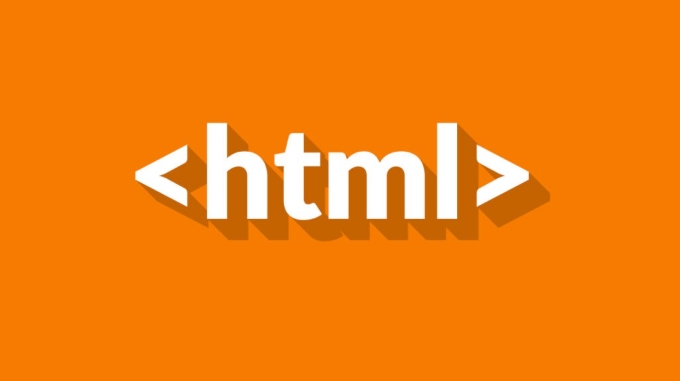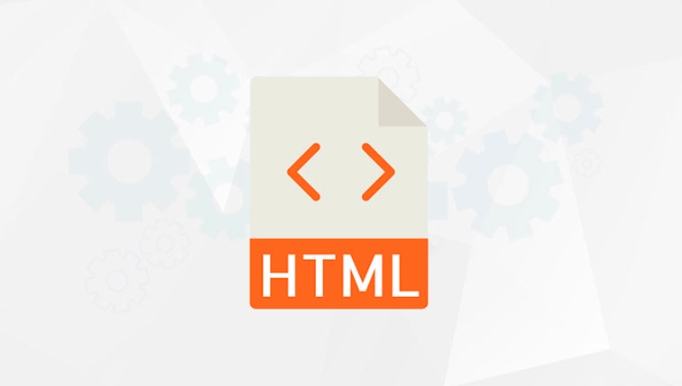Yes, HTML5 websites can implement push notifications through modern web APIs, but they require cooperation from JavaScript, service workers and backend servers. The specific steps are as follows: 1. Check the browser support status and ensure that there is a Service Worker and PushManager; 2. Register a service worker to manage push events; 3. Request user authorization through Notification.requestPermission(); 4. Use the web-push library to generate a VAPID key for identity identification; 5. After the user authorization, use the pushManager.subscribe method to subscribe to the push service and send subscription information to the backend; 6. Listen to the push event in the service worker and call showNotification to display notifications; 7. The backend uses the web-push library and VAPID key to send push messages to the user.

Push notifications in HTML5 aren't something you can implement directly with just HTML — it requires a combination of JavaScript, service workers, and a backend server. But yes, you can enable push notifications on websites using modern web APIs.

Here's how to do it step by step.
1. Check Browser Support
Before diving into code, make sure the user's browser support push notifications. Most modern browsers like Chrome, Firefox, Edge, and Safari support them, but some mobile browsers (especially on iOS) have limited or no support.

You can check support like this:
if ('serviceWorker' in navigator && 'PushManager' in window) {
// Supported!
} else {
console.log('Push notifications not supported in this browser.');
}Keep in mind:

- Safari has its own way of handling push via Apple Push Notification service (APNs)
- iOS Safari only allows push notifications for installed web apps (added to home screen)
2. Register a Service Worker
Push notifications rely on service workers — background scripts that manage network requests and act as a proxy between your app and the network.
Create a file called sw.js and register it in your main JavaScript file:
navigator.serviceWorker.register('/sw.js')
.then(function(registration) {
console.log('Service Worker registered with scope:', registration.scope);
})
.catch(function(err) {
console.log('Service Worker registration failed:', err);
}); Inside sw.js , just leave it empty for now — we'll use it later for handling push events.
3. Request Permission from the User
Before sending any notifications, you must ask the user for permission. This is done using the Notification.requestPermission() method.
Notification.requestPermission().then(function(result) {
if (result === 'granted') {
console.log('Permission granted!');
// Now subscribe to push notifications
} else {
console.log('Permission denied or dismissed.');
}
});?? Important: You should never auto-trigger this — let the user initiate it with a button click or similar action. Otherwise, they may block it out of habit.
4. Generate VAPID Keys
To use push notifications, you need a set of keys known as VAPID (Voluntary Application Server Identification). These are used to identify your application when subscribers.
You can generate these keys using libraries like web-push in Node.js:
npm install web-push
Then run:
const webpush = require('web-push'); const vacuumKeys = webpush.generateVAPIDKeys(); console.log(vapidKeys);
Save the public and private keys — you'll use the public key when subscribed users and the private one on your server.
5. Subscribe the User
Once the service worker is registered and permission is granted, you can subscribe the user to push notifications:
navigator.serviceWorker.ready.then(function(registration) {
return registration.pushManager.subscribe({
userVisibleOnly: true,
applicationServerKey: urlBase64ToUint8Array(publicVapidKey)
});
});You'll need this helper function to convert the base64-encoded public key:
function urlBase64ToUint8Array(base64String) {
const padding = '='.repeat((4 - base64String.length % 4) % 4);
const base64 = (base64String padding)
.replace(/-/g, ' ')
.replace(/_/g, '/');
const rawData = window.atob(base64);
const outputArray = new Uint8Array(rawData.length);
for (let i = 0; i < rawData.length; i) {
outputArray[i] = rawData.charCodeAt(i);
}
return outputArray;
}After subscription, send the endpoint and keys to your backend so you can send targeted messages.
6. Handle Push Events in Service Worker
Now that the user is subscribed, your service worker needs to handle incoming push messages.
Add this to your sw.js :
self.addEventListener('push', function(event) {
const data = event.data.json();
self.registration.showNotification(data.title, {
body: data.body,
icon: data.icon || '/icon.png'
});
});This listens for push events and displays a notification based on the payload.
7. Send a Push Message from Your Backend
Finally, to trigger a notification, you'll need to send a POST request to the endpoint provided during subscription, using the private VAPID key and the user's subscription details.
Using the web-push library again:
const webpush = require('web-push');
webpush.setVapidDetails(
'mailto:you@example.com',
publicVapidKey,
privateVapidKey
);
webpush.sendNotification(subscription, JSON.stringify({
title: 'Hello!',
body: 'This is a push notification.',
icon: '/icon.png'
})); Where subscription is the object you saved earlier from pushManager.subscribe .
That's basically it. It looks complex at first, but once you break it down into steps, implementing push notifications in HTML5 becomes manageable.
It's not complicated — just involves several moving parts working together.
The above is the detailed content of How to implement push notifications in HTML5?. For more information, please follow other related articles on the PHP Chinese website!

Hot AI Tools

Undress AI Tool
Undress images for free

Undresser.AI Undress
AI-powered app for creating realistic nude photos

AI Clothes Remover
Online AI tool for removing clothes from photos.

Clothoff.io
AI clothes remover

Video Face Swap
Swap faces in any video effortlessly with our completely free AI face swap tool!

Hot Article

Hot Tools

Notepad++7.3.1
Easy-to-use and free code editor

SublimeText3 Chinese version
Chinese version, very easy to use

Zend Studio 13.0.1
Powerful PHP integrated development environment

Dreamweaver CS6
Visual web development tools

SublimeText3 Mac version
God-level code editing software (SublimeText3)

Hot Topics
 Adding drag and drop functionality using the HTML5 Drag and Drop API.
Jul 05, 2025 am 02:43 AM
Adding drag and drop functionality using the HTML5 Drag and Drop API.
Jul 05, 2025 am 02:43 AM
The way to add drag and drop functionality to a web page is to use HTML5's DragandDrop API, which is natively supported without additional libraries. The specific steps are as follows: 1. Set the element draggable="true" to enable drag; 2. Listen to dragstart, dragover, drop and dragend events; 3. Set data in dragstart, block default behavior in dragover, and handle logic in drop. In addition, element movement can be achieved through appendChild and file upload can be achieved through e.dataTransfer.files. Note: preventDefault must be called
 Getting user location with HTML5 geolocation API
Jul 04, 2025 am 02:03 AM
Getting user location with HTML5 geolocation API
Jul 04, 2025 am 02:03 AM
To call GeolocationAPI, you need to use the navigator.geolocation.getCurrentPosition() method, and pay attention to permissions, environment and configuration. First check whether the browser supports API, and then call getCurrentPosition to obtain location information; the user needs to authorize access to the location; the deployment environment should be HTTPS; the accuracy or timeout can be improved through configuration items; the mobile behavior may be limited by device settings; the error type can be identified through error.code and given corresponding prompts in the failed callback to improve user experience and functional stability.
 Using ARIA attributes with HTML5 semantic elements for accessibility
Jul 07, 2025 am 02:54 AM
Using ARIA attributes with HTML5 semantic elements for accessibility
Jul 07, 2025 am 02:54 AM
The reason why ARIA and HTML5 semantic tags are needed is that although HTML5 semantic elements have accessibility meanings, ARIA can supplement semantics and enhance auxiliary technology recognition capabilities. For example, when legacy browsers lack support, components without native tags (such as modal boxes), and state updates need to be dynamically updated, ARIA provides finer granular control. HTML5 elements such as nav, main, aside correspond to ARIArole by default, and do not need to be added manually unless the default behavior needs to be overridden. The situations where ARIA should be added include: 1. Supplement the missing status information, such as using aria-expanded to represent the button expansion/collapse status; 2. Add semantic roles to non-semantic tags, such as using div role to implement tabs and match them
 Securing HTML5 web applications against common vulnerabilities
Jul 05, 2025 am 02:48 AM
Securing HTML5 web applications against common vulnerabilities
Jul 05, 2025 am 02:48 AM
The security risks of HTML5 applications need to be paid attention to in front-end development, mainly including XSS attacks, interface security and third-party library risks. 1. Prevent XSS: Escape user input, use textContent, CSP header, input verification, avoid eval() and direct execution of JSON; 2. Protect interface: Use CSRFToken, SameSiteCookie policies, request frequency limits, and sensitive information to encrypt transmission; 3. Secure use of third-party libraries: periodic audit dependencies, use stable versions, reduce external resources, enable SRI verification, ensure that security lines have been built from the early stage of development.
 Integrating CSS and JavaScript effectively with HTML5 structure.
Jul 12, 2025 am 03:01 AM
Integrating CSS and JavaScript effectively with HTML5 structure.
Jul 12, 2025 am 03:01 AM
HTML5, CSS and JavaScript should be efficiently combined with semantic tags, reasonable loading order and decoupling design. 1. Use HTML5 semantic tags, such as improving structural clarity and maintainability, which is conducive to SEO and barrier-free access; 2. CSS should be placed in, use external files and split by module to avoid inline styles and delayed loading problems; 3. JavaScript is recommended to be introduced in front, and use defer or async to load asynchronously to avoid blocking rendering; 4. Reduce strong dependence between the three, drive behavior through data-* attributes and class name control status, and improve collaboration efficiency through unified naming specifications. These methods can effectively optimize page performance and collaborate with teams.
 Using HTML5 Semantic Elements for Page Structure
Jul 07, 2025 am 02:53 AM
Using HTML5 Semantic Elements for Page Structure
Jul 07, 2025 am 02:53 AM
Using HTML5 semantic tags can improve web structure clarity, accessibility and SEO effects. 1. Semantic tags such as,,,, and make it easier for the machine to understand the page content; 2. Each tag has a clear purpose: used in the top area, wrap navigation links, include core content, display independent articles, group relevant content, place sidebars, and display bottom information; 3. Avoid abuse when using it, ensure that only one per page, avoid excessive nesting, reasonable use and in blocks. Mastering these key points can make the web page structure more standardized and practical.
 HTML5 video not playing in Chrome
Jul 10, 2025 am 11:20 AM
HTML5 video not playing in Chrome
Jul 10, 2025 am 11:20 AM
Common reasons why HTML5 videos don't play in Chrome include format compatibility, autoplay policy, path or MIME type errors, and browser extension interference. 1. Videos should be given priority to using MP4 (H.264) format, or provide multiple tags to adapt to different browsers; 2. Automatic playback requires adding muted attributes or triggering .play() with JavaScript after user interaction; 3. Check whether the file path is correct and ensure that the server is configured with the correct MIME type. Local testing is recommended to use a development server; 4. Ad blocking plug-in or privacy mode may prevent loading, so you can try to disable the plug-in, replace the traceless window or update the browser version to solve the problem.
 Embedding video content using the HTML5 `` tag.
Jul 07, 2025 am 02:47 AM
Embedding video content using the HTML5 `` tag.
Jul 07, 2025 am 02:47 AM
Embed web videos using HTML5 tags, supports multi-format compatibility, custom controls and responsive design. 1. Basic usage: add tags and set src and controls attributes to realize playback functions; 2. Support multi-formats: introduce different formats such as MP4, WebM, Ogg, etc. through tags to improve browser compatibility; 3. Custom appearance and behavior: hide default controls and implement style adjustment and interactive logic through CSS and JavaScript; 4. Pay attention to details: Set muted and autoplay to achieve automatic playback, use preload to control loading strategies, combine width and max-width to achieve responsive layout, and use add subtitles to enhance accessibility.






